Geoblog.pl  bzmot
bzmot  Podróże
Podróże  Łosie okrakiem przez Amerykę - V2.0 - The Moose Do America Again - Click Here!!!
Łosie okrakiem przez Amerykę - V2.0 - The Moose Do America Again - Click Here!!!  Przelotem w Oruro/A day in Oruro in transit
Przelotem w Oruro/A day in Oruro in transit
 bzmot
bzmot  Podróże
Podróże  Łosie okrakiem przez Amerykę - V2.0 - The Moose Do America Again - Click Here!!!
Łosie okrakiem przez Amerykę - V2.0 - The Moose Do America Again - Click Here!!!  Przelotem w Oruro/A day in Oruro in transit
Przelotem w Oruro/A day in Oruro in transit 
Po relaksującym tygodniu w La Paz wróciliśmy do Oruro. Stamtąd chcieliśmy złapać pociąg do Uyuni, bo w porze deszczowej autobusy gorzej sobie radzą na piaszczystej drodze.
Przyjeżdżamy w nocy i zajeżdżamy do naszego hoteliku, a tu miejsc brak. Ki diabeł? To samo w kilku kolejnych. Okazuje się, że ludzie tu z karnawału wracają niespiesznie, kilka dni i wszyscy chcą jechać jutrzejszym pociągiem, ups! Znaleźliśmy w końcu jakąś żałosną klitkę, byle blisko stacji, bo z rana trzeba się zerwać do kolejki. Wstaję przed szóstą na stację (tym razem moja kolej) a tam ogonek sześśdziesięcioosobowy (a każdy może kupić bilet dla całej rodziny). Pierwsi zajęli kolejkę już o 21.00 poprzedniego dnia. I to żeby kupić bilet na następny dzień, bo na dzisiejszy pociąg wszystko wyprzedane. No ale chwytam swój numerek i czekam, jest nadzieja. Oczekiwanie umila mi rozmowa z Leonardo, księgowym wojskowym z Buenos Aires, który ma tu kuzyna i wie sporo o karnawale orureńskim. Podejrzewałam, że za rządów Moralesa z karnawału zrobiono sponsorowane przez państwo święto ludowe, żeby się naród zachłysnął na chwilę dumą ze swojej tradycji i zapomniał o codziennych troskach. Okazuje się jednak, że jest podobnie jak w Rio, tzn. każdy sam za swój strój musi zapłacić i to konkretne dla nich pieniądze, bo najdroższe kosztują 200 dolarów i więcej. Niektóre zespoły mają sponsorów, ale ogólnie jest to własna inwestycja i to kilkuletnia, bo uczestnicy przed karnawałem obiecują matce boskiej z Socavon, że będą występować przez kilka kolejnych lat. Obcokrajowcy też są przyjmowani, ale ich też dotyczy to zobowiązanie. To już wiemy skąd ta blond panienka na naszych zdjęciach. A propos obcokrajowcow, to strasznie nas bawi widok argentynskich zonglerow, ktorzy przyjezdzaja do kilkakrotnie biedniejszej Boliwii zbierac kase na ulicy. Jest ich tu cala masa i jakies drobne im sie udaje zebrac.
Po konsultacji z Łosiem postanowiliśmy jechać jednak autobusem, bo pociąg dowiózłby nas do Uyuni w środku nocy. Bardzo chciałam pojechać na wycieczkę do Chipaya, wioski w górach zamieszkanej przez bardzo stary lud, który schronił się tam przed inkaskim podbojem. Żyją w izolacji, w tradycyjnych domach w kształcie igloo, budowanych z ziemnych bloków. Niestety, mimo, że to tylko 180 km od Oruro, transportu publicznego nie ma, a agencje wszystkie się albo pozamykały, albo chciały za półtoradniową wycieczkę 360 dolarów od łebka, buhuhu. A jak Łoś zapytał, czy czasem zera im się nie pomyliły, to pani się w mailu odgryzła, że za 36 to sobie może piechotą iść. No więc kupiliśmy bilet na nocny autobus, Łoś zabrał się za małą prackę w kafejce, a ja poszłam zwiedzać. Najbardziej mi zależało na jeziorze Uru Uru, przez które przejeżdża pociąg tuż przed wjazdem do Oruro. I to nie mostem, tylko dosłownie tory prowadzą przez płytkie wody jeziora. Widok był śliczny, błękitna woda po obu stronach, z trzcinowymi zaroślami, ale nie zdążyliśmy porządnego aparatu wyjąć, a na małym wszystko się rozmazało. Pojechałam busikiem do Surtidor San Ingo, stamtąd złapałam jakiś inny do Puente Espanol na brzegu jeziora. Przy moście jezioro wygląda tak sobie, pozarastane, trochę śmieci, hm. Na moście przydybuje mnie policjant i ... oferuje przejażdżkę wokół jeziora. ?Z pewną taką nieśmiałością?, ale się zgadzam, bo w końcu policjant mi numeru nie wykręci, chyba. Pędzimy motorem po polnej drodze, wjeżdżamy coraz bardziej w pustkowie, a mi się oczy coraz szerzej otwierają. Na niebie śliczne chmurki jakby ulepione umyślnie i wszystko to w wodzie się odbija, potem jedziemy spękanym jak pustynia brzegiem, mijamy pięćsetletnie opuszczone domki, super widoki.
Po godzinie sierżant Ricardo odwozi mnie z powrotem do mostku, żegnamy się czule :-) po czym ruszam w drogę. Pusto, a przede mną kilka kilometrów, kurczę, jak ja na nocny autobus zdążę. Za chwilę dobiega mnie jednak warkot silnika - Ricarco jedzie mi na odsiecz, żeby do rogatek mnie dowieźć. Mam jeszcze kupę czasu, żeby zwiedzić muzeum Patino ? widowiskową rezydencję bogatego przemysłowca, o której powiedział mi Leonardo, a na którą wpadam zupełnie przypadkiem, mijając ją autobusem. Rezydencja powala przez to, że odkąd zarekwirowało ją państwo w latach 50-tych, wszystko zostało nietknięte i na swoim miejscu, zupełnie jakby wczoraj tam jeszcze ktoś mieszkał. Kilkanaście pięknie i ze smakiem urządzonych pokoi, a w jednym z nich orchestón czyli wielki mechaniczny instrument, jeden z trzech istniejących na świecie, a jedyny do dziś grający. Kakofonia niezła, ale jaki rozmach, klawisze, bębenki, wałki z zapisaną melodią, a wszystko to w moim ?salonie? by się nie zmieściło. Tego samego dnia zdążyłam jeszcze pojechać na drugi koniec miasta, gdzie na wylocie na La Paz stoi szereg wielkich metalowych rzeźb przedstawiających postacie z karnawału. A potem hopla w autobus do Uyuni. Miał nas dowieźć na czwartą-piątą rano, a fe, bo bladym świtem, ale na szczęście tuż po starcie się zepsuł, a naprawa opóźniła nasz przyjazd akurat na tyle, żeby zajechać o przyzwoitej porze. Ciąg dalszy wkrótce, bo teraz padam z nóg.
Alter a relaxing week in La Paz we got back to Oruro. There we wanted to catch a train to Uyuni, as in the rainy season buses do badly on the muddy road.
We arrive at night and get to our hotel and there are no vacancies. What the hell? Same story repeats in several more hotels. It turns out people are still on their way back home from the carnival, no hurry at all, for several days and they all want to take tomorrow´s train, oops! Finally we found a pathetic dodgy room, at least it was close to the train station as I need to wake up first thing in the morning to get in the waiting line around six a.m. (now it´s my turn) and here it is, a line of 70 people already waiting (each of them entitled to buy tickets for the whole family). I hear the first ones were there at 9 pm the day before. And, mind you, to get tickets for the next train as today´s train has been long sold out.. Either way I grab my waiting ticket and wait, all hope is not yet lost. I meet Leonardo, a military accountant from Buenos Aires who´s got a cousin here and hence knows a lot abt the Oruro carnival. I had a sneaking suspicion that with Morales in power the carnival turned into a state-sponsored popular celebration to make the people proud of their tradition and forget about the everyday hardships. It turns out, however, that it is a bit like in Rio, everybody has to pay for their own outfit and it´s serious money for them with the most expensive ones reaching 200 dollars and more. Some bands have sponsors but generally it is a personal expenditure and a long-term one, too as the participants promise the St. Mary of Socavon to come back to perform several years in a row. Foreigners are welcome as well but the commitment also applies to them. Now we know what´s the German blondie doing in our photo. Speaking of foreigners, we had heaps of laughs watching Argentinians jugglers who come to the poor Bolivia to earn some change in the street. There are lots of them and they still get to collect some beer money.
Upon a consultation with the male Moose, we decided to take a bus after all as the train would get us to Uyuni in the middle of the night. I really wanted to take a trip to Chipaya, a mountain village inhabited by an old people that took refuge up there from the Inka conquest. They live in igloo-shaped houses built of earth blocks. Unfortunately, even though it´s just 180 km away from Oruro, there´s no public transport and all the agencies either went bankrupt or want 360 dollars per person for a one day and a half trip, funny funny. And when Moose asked the lady if she´s sure she got the zeros right, she snapped that for 36 dollars he can go ahead and walk. So the Moose went to work some in a cyber cafe and I set out to do some sightseeing. Most of all, I wanted to see the Uru Uru lake that the train to Oruro goes through just before arriving at the station. And I don't mean over the bridge but literally the track goes through the shallow lake water. The view was beautiful, blue water on both sides, reed clusters sticking out, but we didn't take out the big camera on time and the small one got it all blurred. I took a minibus to Surtidor San Ingo, where I caught another one to the Puente Espanol on the lakeshore. Near the bridge, the laelooks so-so, with too much duckweed on t e surface, trash scattered here and there, oh well... At the bridge a policeman stops me and...offers a ride around the lake.Nothwithstanding some panicky images flashing through my head, I gladly accept the offer, well I don't expect a uniform-wearing policeman to mistreat a tourist with his subordinates as witnesses. We are dashing on the motorbike on the field road, farther and farther from world with my eyes opening wider as we go. The sky features cute sheep like clouds as if craftly modeled by a playful artist and all this is reflected in the water, then we go along the shore that is cracked like the desert, we go past abandoned houses that date back to 1500s, great views. After an hour, sergeant Ricardo takes me back to the bridge
It?s all empty and several kilometers to go. Shit, will I ever make it for the night bus? However, 5 minutes later I can hear the engine whirring behind me and here he is, dear old Ricardo coming to rescue me again by bringing me to the town?s limits. I still have plenty of time to visit the Patino museum ? a spectacular residence of a tin magnate that Leonardo told me about, that I bump into by sheer chance on my way back to the centre. The residence is so breath taking because since it was requisitioned by the state in the 50s, everything has remained intact and in the right place as if it was left just yesterday. Over a dozen of beautiful and tastefully decorated rooms, one of them housing an orchestón, that is a giant mechanical instrument, one of four of the kind ever built and the only one that is maintained well enough to still play music. It sounds a bit out of tune but what a flourish, keys, drums, rollers with melody grooves and all this bigger than my living room. On the same day, I had enough time left to go to the other end of town, on the La Paz exit, to see a line of huge metal sculptures of carnival characters. Then off we go on the bus to Uyuni. It was supposed to leave us there at 4-5 a.m. yuck, not even in daylight yet, but luckily it broke right after it started, and the repair time gave us just enough delay to arrive at a nice morning hour.
Przyjeżdżamy w nocy i zajeżdżamy do naszego hoteliku, a tu miejsc brak. Ki diabeł? To samo w kilku kolejnych. Okazuje się, że ludzie tu z karnawału wracają niespiesznie, kilka dni i wszyscy chcą jechać jutrzejszym pociągiem, ups! Znaleźliśmy w końcu jakąś żałosną klitkę, byle blisko stacji, bo z rana trzeba się zerwać do kolejki. Wstaję przed szóstą na stację (tym razem moja kolej) a tam ogonek sześśdziesięcioosobowy (a każdy może kupić bilet dla całej rodziny). Pierwsi zajęli kolejkę już o 21.00 poprzedniego dnia. I to żeby kupić bilet na następny dzień, bo na dzisiejszy pociąg wszystko wyprzedane. No ale chwytam swój numerek i czekam, jest nadzieja. Oczekiwanie umila mi rozmowa z Leonardo, księgowym wojskowym z Buenos Aires, który ma tu kuzyna i wie sporo o karnawale orureńskim. Podejrzewałam, że za rządów Moralesa z karnawału zrobiono sponsorowane przez państwo święto ludowe, żeby się naród zachłysnął na chwilę dumą ze swojej tradycji i zapomniał o codziennych troskach. Okazuje się jednak, że jest podobnie jak w Rio, tzn. każdy sam za swój strój musi zapłacić i to konkretne dla nich pieniądze, bo najdroższe kosztują 200 dolarów i więcej. Niektóre zespoły mają sponsorów, ale ogólnie jest to własna inwestycja i to kilkuletnia, bo uczestnicy przed karnawałem obiecują matce boskiej z Socavon, że będą występować przez kilka kolejnych lat. Obcokrajowcy też są przyjmowani, ale ich też dotyczy to zobowiązanie. To już wiemy skąd ta blond panienka na naszych zdjęciach. A propos obcokrajowcow, to strasznie nas bawi widok argentynskich zonglerow, ktorzy przyjezdzaja do kilkakrotnie biedniejszej Boliwii zbierac kase na ulicy. Jest ich tu cala masa i jakies drobne im sie udaje zebrac.
Po konsultacji z Łosiem postanowiliśmy jechać jednak autobusem, bo pociąg dowiózłby nas do Uyuni w środku nocy. Bardzo chciałam pojechać na wycieczkę do Chipaya, wioski w górach zamieszkanej przez bardzo stary lud, który schronił się tam przed inkaskim podbojem. Żyją w izolacji, w tradycyjnych domach w kształcie igloo, budowanych z ziemnych bloków. Niestety, mimo, że to tylko 180 km od Oruro, transportu publicznego nie ma, a agencje wszystkie się albo pozamykały, albo chciały za półtoradniową wycieczkę 360 dolarów od łebka, buhuhu. A jak Łoś zapytał, czy czasem zera im się nie pomyliły, to pani się w mailu odgryzła, że za 36 to sobie może piechotą iść. No więc kupiliśmy bilet na nocny autobus, Łoś zabrał się za małą prackę w kafejce, a ja poszłam zwiedzać. Najbardziej mi zależało na jeziorze Uru Uru, przez które przejeżdża pociąg tuż przed wjazdem do Oruro. I to nie mostem, tylko dosłownie tory prowadzą przez płytkie wody jeziora. Widok był śliczny, błękitna woda po obu stronach, z trzcinowymi zaroślami, ale nie zdążyliśmy porządnego aparatu wyjąć, a na małym wszystko się rozmazało. Pojechałam busikiem do Surtidor San Ingo, stamtąd złapałam jakiś inny do Puente Espanol na brzegu jeziora. Przy moście jezioro wygląda tak sobie, pozarastane, trochę śmieci, hm. Na moście przydybuje mnie policjant i ... oferuje przejażdżkę wokół jeziora. ?Z pewną taką nieśmiałością?, ale się zgadzam, bo w końcu policjant mi numeru nie wykręci, chyba. Pędzimy motorem po polnej drodze, wjeżdżamy coraz bardziej w pustkowie, a mi się oczy coraz szerzej otwierają. Na niebie śliczne chmurki jakby ulepione umyślnie i wszystko to w wodzie się odbija, potem jedziemy spękanym jak pustynia brzegiem, mijamy pięćsetletnie opuszczone domki, super widoki.
Po godzinie sierżant Ricardo odwozi mnie z powrotem do mostku, żegnamy się czule :-) po czym ruszam w drogę. Pusto, a przede mną kilka kilometrów, kurczę, jak ja na nocny autobus zdążę. Za chwilę dobiega mnie jednak warkot silnika - Ricarco jedzie mi na odsiecz, żeby do rogatek mnie dowieźć. Mam jeszcze kupę czasu, żeby zwiedzić muzeum Patino ? widowiskową rezydencję bogatego przemysłowca, o której powiedział mi Leonardo, a na którą wpadam zupełnie przypadkiem, mijając ją autobusem. Rezydencja powala przez to, że odkąd zarekwirowało ją państwo w latach 50-tych, wszystko zostało nietknięte i na swoim miejscu, zupełnie jakby wczoraj tam jeszcze ktoś mieszkał. Kilkanaście pięknie i ze smakiem urządzonych pokoi, a w jednym z nich orchestón czyli wielki mechaniczny instrument, jeden z trzech istniejących na świecie, a jedyny do dziś grający. Kakofonia niezła, ale jaki rozmach, klawisze, bębenki, wałki z zapisaną melodią, a wszystko to w moim ?salonie? by się nie zmieściło. Tego samego dnia zdążyłam jeszcze pojechać na drugi koniec miasta, gdzie na wylocie na La Paz stoi szereg wielkich metalowych rzeźb przedstawiających postacie z karnawału. A potem hopla w autobus do Uyuni. Miał nas dowieźć na czwartą-piątą rano, a fe, bo bladym świtem, ale na szczęście tuż po starcie się zepsuł, a naprawa opóźniła nasz przyjazd akurat na tyle, żeby zajechać o przyzwoitej porze. Ciąg dalszy wkrótce, bo teraz padam z nóg.
Alter a relaxing week in La Paz we got back to Oruro. There we wanted to catch a train to Uyuni, as in the rainy season buses do badly on the muddy road.
We arrive at night and get to our hotel and there are no vacancies. What the hell? Same story repeats in several more hotels. It turns out people are still on their way back home from the carnival, no hurry at all, for several days and they all want to take tomorrow´s train, oops! Finally we found a pathetic dodgy room, at least it was close to the train station as I need to wake up first thing in the morning to get in the waiting line around six a.m. (now it´s my turn) and here it is, a line of 70 people already waiting (each of them entitled to buy tickets for the whole family). I hear the first ones were there at 9 pm the day before. And, mind you, to get tickets for the next train as today´s train has been long sold out.. Either way I grab my waiting ticket and wait, all hope is not yet lost. I meet Leonardo, a military accountant from Buenos Aires who´s got a cousin here and hence knows a lot abt the Oruro carnival. I had a sneaking suspicion that with Morales in power the carnival turned into a state-sponsored popular celebration to make the people proud of their tradition and forget about the everyday hardships. It turns out, however, that it is a bit like in Rio, everybody has to pay for their own outfit and it´s serious money for them with the most expensive ones reaching 200 dollars and more. Some bands have sponsors but generally it is a personal expenditure and a long-term one, too as the participants promise the St. Mary of Socavon to come back to perform several years in a row. Foreigners are welcome as well but the commitment also applies to them. Now we know what´s the German blondie doing in our photo. Speaking of foreigners, we had heaps of laughs watching Argentinians jugglers who come to the poor Bolivia to earn some change in the street. There are lots of them and they still get to collect some beer money.
Upon a consultation with the male Moose, we decided to take a bus after all as the train would get us to Uyuni in the middle of the night. I really wanted to take a trip to Chipaya, a mountain village inhabited by an old people that took refuge up there from the Inka conquest. They live in igloo-shaped houses built of earth blocks. Unfortunately, even though it´s just 180 km away from Oruro, there´s no public transport and all the agencies either went bankrupt or want 360 dollars per person for a one day and a half trip, funny funny. And when Moose asked the lady if she´s sure she got the zeros right, she snapped that for 36 dollars he can go ahead and walk. So the Moose went to work some in a cyber cafe and I set out to do some sightseeing. Most of all, I wanted to see the Uru Uru lake that the train to Oruro goes through just before arriving at the station. And I don't mean over the bridge but literally the track goes through the shallow lake water. The view was beautiful, blue water on both sides, reed clusters sticking out, but we didn't take out the big camera on time and the small one got it all blurred. I took a minibus to Surtidor San Ingo, where I caught another one to the Puente Espanol on the lakeshore. Near the bridge, the laelooks so-so, with too much duckweed on t e surface, trash scattered here and there, oh well... At the bridge a policeman stops me and...offers a ride around the lake.Nothwithstanding some panicky images flashing through my head, I gladly accept the offer, well I don't expect a uniform-wearing policeman to mistreat a tourist with his subordinates as witnesses. We are dashing on the motorbike on the field road, farther and farther from world with my eyes opening wider as we go. The sky features cute sheep like clouds as if craftly modeled by a playful artist and all this is reflected in the water, then we go along the shore that is cracked like the desert, we go past abandoned houses that date back to 1500s, great views. After an hour, sergeant Ricardo takes me back to the bridge
It?s all empty and several kilometers to go. Shit, will I ever make it for the night bus? However, 5 minutes later I can hear the engine whirring behind me and here he is, dear old Ricardo coming to rescue me again by bringing me to the town?s limits. I still have plenty of time to visit the Patino museum ? a spectacular residence of a tin magnate that Leonardo told me about, that I bump into by sheer chance on my way back to the centre. The residence is so breath taking because since it was requisitioned by the state in the 50s, everything has remained intact and in the right place as if it was left just yesterday. Over a dozen of beautiful and tastefully decorated rooms, one of them housing an orchestón, that is a giant mechanical instrument, one of four of the kind ever built and the only one that is maintained well enough to still play music. It sounds a bit out of tune but what a flourish, keys, drums, rollers with melody grooves and all this bigger than my living room. On the same day, I had enough time left to go to the other end of town, on the La Paz exit, to see a line of huge metal sculptures of carnival characters. Then off we go on the bus to Uyuni. It was supposed to leave us there at 4-5 a.m. yuck, not even in daylight yet, but luckily it broke right after it started, and the repair time gave us just enough delay to arrive at a nice morning hour.
Komentarze (2)

 RICARDO AJHUACHO APAZA - 2008-01-01 02:41
RICARDO AJHUACHO APAZA - 2008-01-01 02:41HOLA JOANNA GRACIAS POR LA FOTOS QUE ME ENVIASTE, TE CUENTO QUE YA NO TRABAJO EN EL MISMO LUGAR ME ENVIARON AL COMANDO CENTRAL BUENO TE MANDO EL NUMERO DE MI CELULAR 76141536 LA PROXIMA VEZ TE MANDARE MI CORREO AUN NO LO TENGO, BUENO ESPERO QUE TE ENCUENTRES BIEN DE SALUD EN COMPANIA DE TUS COMPAÑEROS SIGUE RECORRIENDO LOS DIFERENTES PAISES Y A HABER SI ME MANDAS ALGUNAS FOTOS DE TUS RECORRIDOS BUENO ME DESPIDO DESEANDOTE UNA FELIZ NAVIDAD Y UN PROSPERO AÑO NUEVO HASTA PRONTO

 bzmot - 2008-01-05 16:20
bzmot - 2008-01-05 16:20Hola Ricardo, que lindo escuchar de usted. Mire, cambié mi dirección de correo pues cuando me escriba, en vez de clil.pl hay que poner gmail.com despues de @. El apodo es el mismo que antes. Que le vaya muy bien en el año nuevo y nos comunicamos.
Chau
Joanna
Chau
Joanna





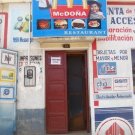
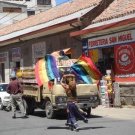
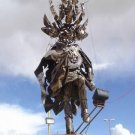
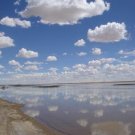

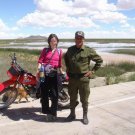
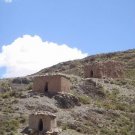
 Zasoby:
Zasoby: 






